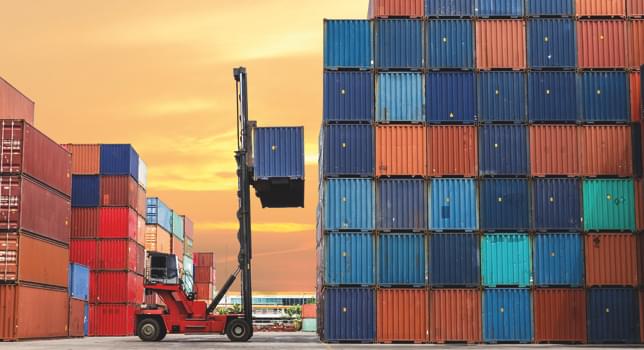
Supply chains for each material are broadly similar, and they experience similar disruptive events Influences that disrupt supply chains include social, demographic, political, regulatory and natural occurrence. The impact of these disruptors ripples through the supply chains, so how can we mitigate and minimize these effects?
This new report considers the major short- and longer-term factors causing supply chain disruption, and presents strategies designed to combat such shocks. The report covers five major packaging material categories: rigid plastics, flexible packaging (flexible plastic, flexible foil, flexible papers), board, metal, and glass. It maps out the packaging supply chain for each material type, identifies potential disruptive factors at each stage and forecasts changes over the next five years. Supply chain disruption becomes most apparent when an unexpected event occurs, causing significant repercussions for market participants either at one stage of the supply chain or usually for participants along the chain.
Our exclusive content
This report is based on extensive primary and secondary research. Primary research consisted of interviews with targeted interviews with packaging material suppliers, converters and experts drawn from key markets. This was supported by secondary research in the form of extensive literature analysis of published data, official government statistics, domestic and international trade organisation data, company websites, industry reports, trade press articles, presentations, and attendance at trade events.
About the author
David Platt is a freelance business researcher and writer with a broad range of experience in the plastics and packaging industry. He has authored over 50 market reports for Smithers on subjects including global packaging, rigid plastic packaging, PET packaging, flexible packaging, bioplastics, specialty plastics, high-performance packaging film, and pouches, caps & closures. He has participated in consultancy projects and has authored two books for Smithers, and writes for Sustainable Plastics magazine.
This new report considers the major short- and longer-term factors causing supply chain disruption, and presents strategies designed to combat such shocks. The report covers five major packaging material categories: rigid plastics, flexible packaging (flexible plastic, flexible foil, flexible papers), board, metal, and glass. It maps out the packaging supply chain for each material type, identifies potential disruptive factors at each stage and forecasts changes over the next five years. Supply chain disruption becomes most apparent when an unexpected event occurs, causing significant repercussions for market participants either at one stage of the supply chain or usually for participants along the chain.
Our exclusive content
- Analysis of the impact of short-, medium- and longer-term disruptive trends and how the packaging industry is responding to these challenges
- Overview of the packaging industry segmented by material type, end-use market and regional market
- Market disrupters for feedstock producers, raw material suppliers, packaging converters, distributors, brand owners and consumers, and an overview of packaging recycling.
- The major supply and demand factors currently disrupting or likely to disrupt a particular stage of the packaging supply chain over the next five years
- The influences on supply chains of consumer behaviour and relevant disruptive technology developments
- In addition to the basic industry supply chain, various additives are used in the processing and converting of packaging materials. Transportation and logistics between the various stages of the supply chain are an important element in packaging industry supply chains.
- Materials suppliers
- Packaging converters
- Brand owners and packaging buyers
- Packaging and filling machinery manufacturers
- Private and public-sector industry consultants, investors, and analysts.
This report is based on extensive primary and secondary research. Primary research consisted of interviews with targeted interviews with packaging material suppliers, converters and experts drawn from key markets. This was supported by secondary research in the form of extensive literature analysis of published data, official government statistics, domestic and international trade organisation data, company websites, industry reports, trade press articles, presentations, and attendance at trade events.
About the author
David Platt is a freelance business researcher and writer with a broad range of experience in the plastics and packaging industry. He has authored over 50 market reports for Smithers on subjects including global packaging, rigid plastic packaging, PET packaging, flexible packaging, bioplastics, specialty plastics, high-performance packaging film, and pouches, caps & closures. He has participated in consultancy projects and has authored two books for Smithers, and writes for Sustainable Plastics magazine.
Name Impact of Supply Chain Disruption on the Packaging Industry to 2026
Date 9/1/2021
Price $6500.00
